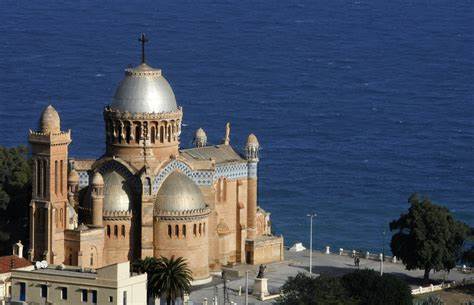Africa, the second-largest continent on Earth, is home to a diverse array of cultures, landscapes, and peoples. It is a land of immense beauty and rich resources, spanning over 30 million square kilometers. In this article, we explore the top 10 largest countries in Africa, each with its own unique characteristics and contributions to the continent’s growth and development.
- Algeria: Covering an expansive area of approximately 2.38 million square kilometers, Algeria is the largest country not only in Africa but also in the entire Arab world. Its diverse terrain encompasses the Sahara Desert, Atlas Mountains, and the Mediterranean coastline. Algeria’s economy thrives on its vast reserves of oil and natural gas.
- Democratic Republic of the Congo: With an area of around 2.34 million square kilometers, the Democratic Republic of the Congo (DRC) is the second-largest country in Africa. It is located in Central Africa and boasts an abundance of natural resources, including minerals, forests, and water bodies. Despite facing numerous challenges, the DRC has immense potential for economic growth and cultural richness.
- Sudan: Spanning approximately 1.86 million square kilometers, Sudan is the third-largest country in Africa. Situated in northeastern Africa, it offers a diverse landscape ranging from deserts to fertile river valleys. Sudan’s economy relies on agriculture, mineral resources, and oil production. The country has a long history and a fascinating blend of cultures.
- Libya: With an area of around 1.76 million square kilometers, Libya is the fourth-largest country in Africa. Its geography is characterized by vast stretches of desert, including the famous Sahara. Libya is renowned for its significant oil reserves, which have been the backbone of its economy. The country has a rich historical heritage, including ancient Roman ruins and archaeological sites.
- Chad: Covering approximately 1.28 million square kilometers, Chad is the fifth-largest country in Africa. Situated in Central Africa, Chad is known for its diverse landscapes, including the Sahara Desert, the Sahel region, and the Lake Chad Basin. Agriculture, oil production, and livestock are key sectors of Chad’s economy.
- Niger: With an area of around 1.27 million square kilometers, Niger is the sixth-largest country in Africa. It is located in West Africa and is predominantly covered by the Sahara Desert. Despite its challenging environment, Niger possesses significant uranium and oil reserves, and agriculture plays a crucial role in its economy.
- Angola: Encompassing approximately 1.25 million square kilometers, Angola is the seventh-largest country in Africa. Situated in southwestern Africa, it boasts a diverse range of ecosystems, including the tropical rainforest of the Congo Basin and the arid Namib Desert. Angola is a major producer of oil and diamonds and is increasingly attracting investment in sectors such as agriculture and renewable energy.
- Mali: With an area of around 1.24 million square kilometers, Mali is the eighth-largest country in Africa. Located in West Africa, Mali is known for its vast Sahelian and Saharan landscapes. It has a rich cultural heritage, with Timbuktu being an important center of Islamic learning in the past. Mali’s economy is primarily based on agriculture, mining, and livestock.
- South Africa: Spanning approximately 1.22 million square kilometers, South Africa is the ninth-largest country in Africa. Situated at the southernmost tip of the continent, it is known for its diverse landscapes, including the iconic Table Mountain, Kruger National Park, and beautiful coastal areas. South Africa has a developed economy and is a major global player in mining, manufacturing, tourism, and finance.
- Ethiopia: Covering an area of around 1.1 million square kilometers, Ethiopia is the tenth-largest country in Africa. Located in the Horn of Africa, it is known for its stunning landscapes, including the Simien Mountains, the Danakil Depression, and the Great Rift Valley. Ethiopia is the second-most populous country in Africa and has a diverse economy with agriculture, manufacturing, and services as key sectors.
Africa’s vastness is reflected in its largest countries, each offering a unique blend of natural wonders, cultural diversity, and economic opportunities. From the Sahara Desert to lush rainforests and vibrant cities, these countries contribute significantly to the continent’s growth and development. With rich natural resources, a young and dynamic population, and a renewed focus on sustainable development, Africa is poised to harness its potential and shape its future for the better.



